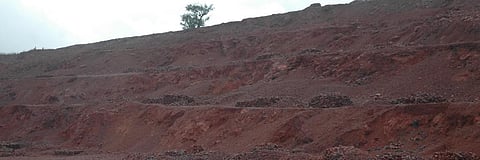

Union finance minister Nirmala Sitharaman said state governments should use district mineral foundation (DMF) funds for response and preparedness to fight the novel coronavirus disease (COVID-19) pandemic.
The finance minister on March 26, 2020, unveiled measures in the wake of a nation-wide lockdown called for by the Union government to combat the pandemic.
Sitharaman said DMF funds should be used to supplement and augment healthcare facilities, screening and testing requirements and any other resources that might be required.
Augmenting healthcare services and delivery is already a high priority area with respect to DMF investments, according to DMF rules of all states.
Healthcare access in most mining districts that have high tribal populations, is an ongoing crisis.
An unprecedented pandemic, however, called for a response beyond the usual.
Questions remain as to how the states should use DMF funds and if the funds — meant for vulnerable mining-affected communities — should be used at all for emergency responses such as this.
No definitive call by states
A state-specific strategy over the usage of DMF funds is yet to be shaped, despite the announcement by Sitharaman.
Officials from most mining states Down To Earth spoke to are yet to figure out how and where to use the funds, if at all needed.
An official from the Chhattisgarh government said no discussions had happened yet on using DMF funds.
Odisha, which announced setting up quarantine hospitals in capital Bhubaneswar through corporate social responsibility support, is considering similar dedicated facilities to deal with the pandemic in districts as well.
“So far, we are trying use corporate social responsibility and other available funds. For mining districts, we might consider using DMF,” said Suresh Mahapatra, development commissioner in Odisha’s planning and convergence department.
Prioritising long-term and investments through DMF
At the district level, DMF has already been used by some to augment facilities.
Most district officials DTE spoke to said DMF funds should be used sparingly and only for facilities and resources that can be counted as long-term assets to the district.
Officials felt they had other fund sources ready to get medical equipment to deal with the pandemic.
Most districts received disaster relief funds, contribution from Members of Parliament and Members of Legislative Assemblies and health department funds. These funds are sufficient for procuring screening kits, ventilators and other equipment, according to officials.
Nikhil Pavan Kalyan, district collector in Odisha’s Sundargarh said officials were using DMF funds to upgrade healthcare facilities over the last one year.
“We have hired doctors, paramedics, got ambulances with ventilators etc, through DMF already,” he said.
The challenge would be to have bigger facilities and man power to deal with a potential crisis situation.
Another issue is with delivery and sourcing of equipment and materials.
“We need ventilators, testing kits and have the money for it, but delivery is stuck on the state border,” said Aditya Ranjan, deputy development commissioner, in Jharkhand’s West Singhbhum district.
The challenge will also be delivery of services as districts face shortage of manpower. A district official said in remote areas, there were ambulances, but no drivers and that there were doctors and nurses but they weren’t enough for a crisis situation.
Should DMF funds be used?
Healthcare is already a high-priority investment area for DMFs. Experts feel if the funds were used properly after a need analysis to target delivery of services, districts would have been better prepared.
Investments through DMF, however, have been largely ad hoc.
Most experts advocate an emergency fund set aside for calamities.
The Centre for Science and Environment had earlier proposed setting aside 10 per cent of the fund for “future use”, in times of calamities or disasters.
There are, however, no such provisions in the law.
“In such situations, support has to go beyond healthcare. There are issues of food and economic security, additional support to vulnerable groups, daily wagers, the aged, children and women,” said Sulakshana Nandi, from Public Health Resource Network (PHRN), Chhattisgarh.
There is also a consensus that funds like DMF that have a targeted function, should be used only after other existing fund sources and state support is accounted for.
“There is a risk that it becomes an easy go-to fund, even when other resources are available. It also helps the state abdicate responsibility in handling the situation and providing safety nets,” said an official on condition of anonymity.
DMFs are a non-profit trust set up in the country’s mining districts to “work for the interest and benefit of people and areas affected by mining-related operations”. The trusts were set up after an amendment in the Mines and Minerals (Development and Regulation) Amendment Act, 2015.
The fund is collected at the district level. There are certain high-priority areas identified in all states’ DMF rules, where at least 60 per cent of the fund must be used. These include vital and pressing concerns, including healthcare.
Approximately Rs 36,000 crore is collected in DMFs across the country. Close to Rs 30,000 crore was sanctioned across the country for various projects and works so far.
Mining states, including Odisha, Chhattisgarh, Jharkhand, Rajasthan and Madhya Pradesh account for about 73 per cent of the total collection.